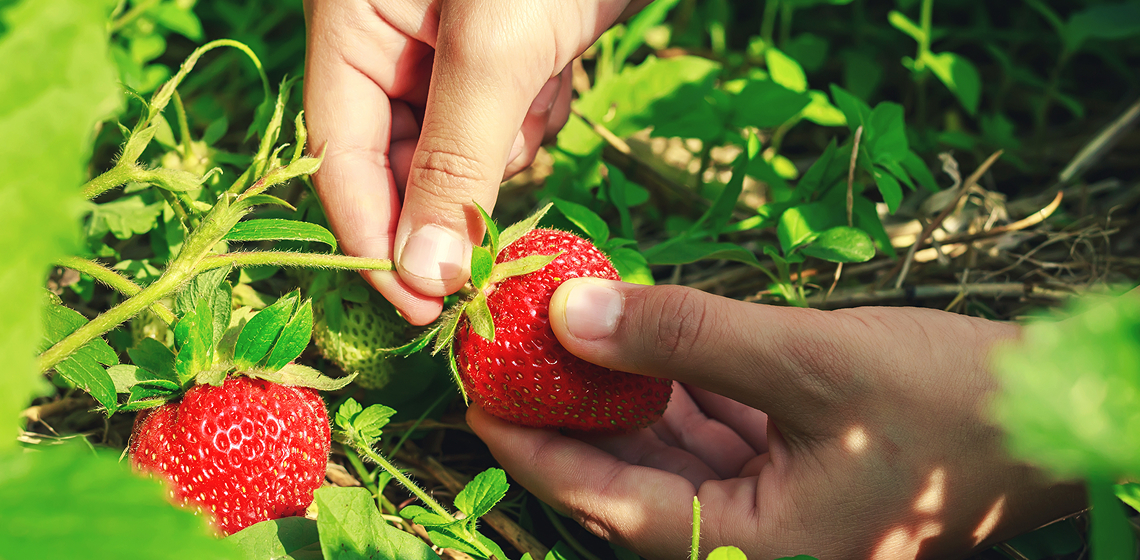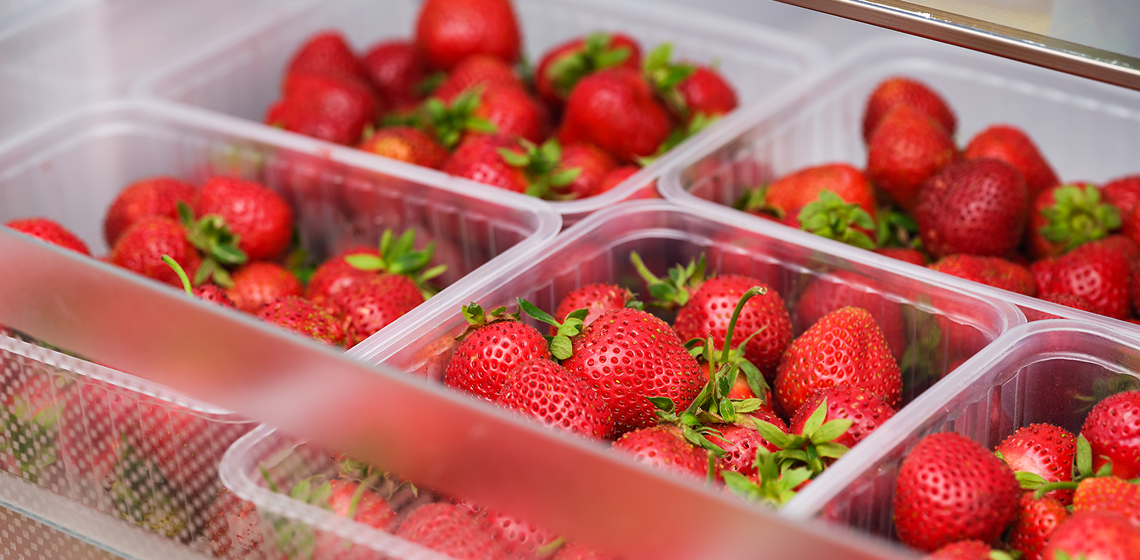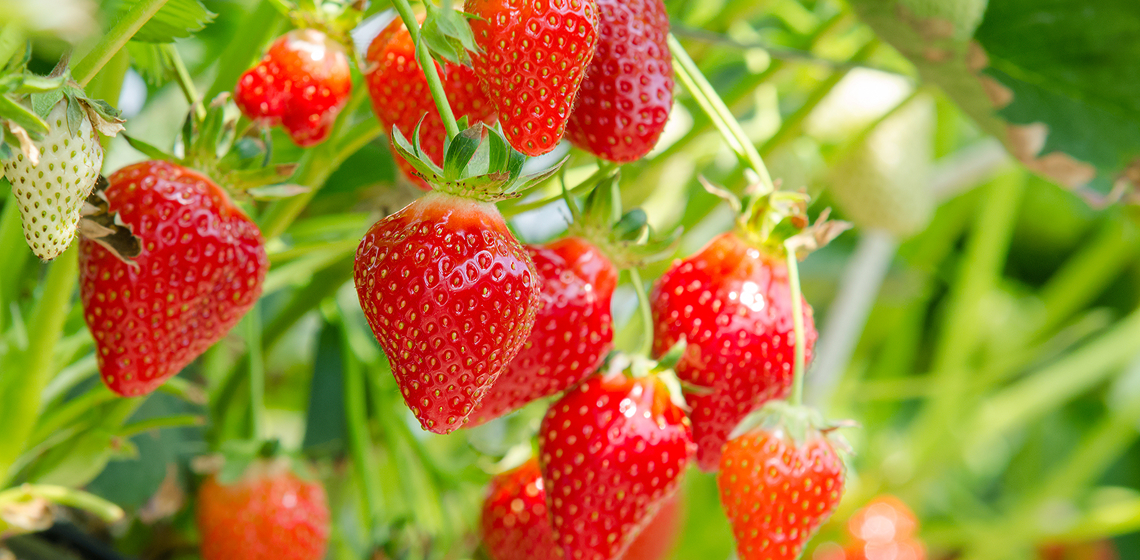Sweet, juicy, and bursting with flavour— strawberries are one of the most beloved fruits of the season. In Canada, strawberry season typically runs from late-May to mid-July. Whether you’re picking them fresh from a local field or picking up a pint at the grocery store, knowing how to choose the ripest berries and store them properly will help you make the most of this delicious fruit. Here’s everything you need to know about strawberries!

How to Pick Strawberries
Strawberry season is short but sweet, so when it’s time to pick, you want to get the best of the bunch! Whether you’re browsing at your local grocery store or heading out to a nearby farm, here are a few tips to help you choose the ripest, juiciest strawberries.
- Look for a deep red colour: Strawberries don’t continue to ripen after they’re picked, so skip any with white or green tips. A vibrant, even red colour is your best bet for full flavour.
- Size doesn’t always matter: Bigger doesn’t mean sweeter! Smaller berries can be just as flavourful.
- Check the stems: Fresh strawberries have bright green, leafy caps that look healthy and attached. If the stem is dry or wilted, the berry is probably on its way out.
- Avoid mush: Give the container a quick check for signs of squashed fruit at the bottom. A single spoiled berry can cause the rest to go bad quickly.

Strawberry Storage Tips
Fresh strawberries are a delicious treat, but they can be delicate! Here’s how to keep them at their best for as long as possible once you bring them home.
Tip 1- Don’t Pre-Wash
It’s tempting to rinse strawberries as soon as you get home, but added moisture softens strawberries and could encourage mold growth. Instead, store them dry and only wash right before eating or using them to keep them firm and fresh.
Tip 2- Line the Container
Once you’re home, transfer strawberries from their plastic clamshell into a shallow container lined with paper towels. This will help absorb any excess moisture and allow the strawberries to breathe. Spread them out in a single layer if you can, stacking can lead to bruising.
Tip 3- Keep Them Cool
Store your strawberries in the fridge, ideally in the crisper drawer. The cold helps slow down spoilage, but avoid the back or the coldest part of the fridge, as this can zap their flavour and texture. For the best taste, let them come to room temperature before serving.

Fun Facts About Strawberries
Strawberries aren’t just delicious! They have some fun quirks that set them apart. Here are some fun facts you might not know about this beloved fruit:
Their seeds are on the outside:
According to the University of Saskatatchewan’s College of Agriculture and Bioresources, on average, a single strawberry has about 200 seeds, all on the outside! This unique trait makes strawberries one of a kind!
They’re not really berries:
McGill University states that, botanically speaking, strawberries aren’t true berries. Unlike blueberries or grapes, which grow from a single ovary, strawberries form from a flower with multiple ovaries.
They’re a source of vitamin C:
According to the Canadian Nutrient File database, strawberries are a source of vitamin C and contain a dietary antioxidant.






